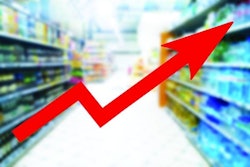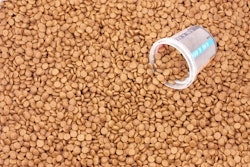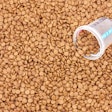
In a recent episode of the Trending: Pet Food podcast, hosted by Petfood Industry Editor Lindsay Beaton, a veterinarian discussed pet owners’ knowledge levels of companion animal nutrition. Chyrle Bonk, DVM, Ph.D., a veterinarian in Washington State, U.S., and a senior contributor to Senior Tail Waggers, provided some interesting insights from her experience that may prove helpful for pet food companies and brands.
Actually, the insights may be best framed as challenges — for both the veterinary and pet food industries. Bonk identified at least four worth considering.
Challenge 1: Pet owner awareness of nutrition. About half of owners are aware that pet nutrition is “more than just dumping food in a bowl,” Bonk said, but it doesn’t come up very often, or at least the topic is not often initiated by owners. Probably the most likely to bring it up are owners of puppies.
“After those puppy years, the conversation really dies down, especially from the owner standpoint, simply because I don’t think they realize nutrition changes throughout a dog’s life and they need to be up-to-date with what’s going on,” Bonk explained. She doesn’t see the topic come up when it’s a healthy, active adult dog, because owners just don’t think about it. “It’s that, ‘if it’s not broke, don’t fix it’ kind of attitude, where their dog seems to be doing fine,” so they think they don’t need to worry about what the dog’s eating or change what they’re feeding.
“One area we really don’t see it is with specific conditions, because owners don’t realize that nutrition can play a huge role in either preventing certain health conditions or in treating and managing certain health conditions; so then it’s really up to the veterinarian to bring it to their attention,” Bonk added. The bottom line when it comes to nutrition, in her experience: Owners may be aware but not necessarily concerned with what they may need to do.
Challenge 2: Time constraints and information overload. Bonk said she believes nutrition should be brought up a veterinarian during every single patient visit, whether it’s for a wellness exam, illness or injury, but that isn’t always practical. “You have only an allotted amount of time that you’re with the owner and the pet, and there are a lot of things that have to be covered, especially if we’re dealing with an illness or something similar.
“Also what you have to deal with is, owners get overloaded with information at veterinary visits. It’s a lot for them to take in,” she continued. “You’re hoping they’re taking in the main points, with nutrition being one of them, but that’s not always the case. So, it’s hard to fit in, and it’s hard for owners to understand, simply because they’re taking in a lot of information at the same time.”
Challenge 3: Pet obesity. Bonk spent a good deal of the podcast episode on this issue, which she called a “big problem, both literally and figuratively.” She attributed that to three main reasons:
- Pet owners just don’t realize when a pet is overweight or obese. “Overweight animals have become more of the norm and more of what people are used to seeing, to the point that when they see an animal that’s the ideal weight, they think, oh my gosh, that animal is so skinny,” Bonk said. Plus, a lot of owners don’t have a scale or other way to track the pet’s weight, which is why body condition charts (some of which come from pet food companies) should be available.
- “Another reason is that pet owners don’t know how much to feed,” Bonk said. “They’re either not aware of the recommended feeding guidelines for their pet’s food or they don’t understand them.” She’s seen, for example, that the amount of food recommended for a specific dog’s size is 2 cups, and the owner interprets that as being 2 cups per meal, not 2 cups for the entire day. “And they don’t realize the cup is an actual measure, not just a drinking cup in your house,” she added.
- The third reason behind rising pet obesity is that “we tend to over love our pets, especially when we’re feeling guilty,” Bonk explained. “Say we didn’t get to take them for as long of a walk as we wanted to or they didn’t get to go to the dog park, so we give them a treat as a way, I think, for us to feel better about it. The dogs don’t know the difference. And then pet owners don’t realize those treats can really add up and make quite a difference in their caloric intake and therefore their weight.”
Challenge 4: Cost vs. value of higher quality pet food. Often, pet owners want specific recommendations from their veterinarians for what to feed their pets. “So I will recommend a few brands or formulas, and then when they find out the cost, they’re done. It’s too much and they’re not even going to think about it any further,” Bonk said. “If there was a better way of relating that cost to people — yes, higher quality foods do cost more, but they also tend to produce less waste, they also tend to require less fed per day, so you’ll end up feeding less overall. I think that would really help them get on board with getting better quality food, rather than just focusing on the price.”
Bonk recommended a pamphlet or chart, so owners could compare the cost and feeding amounts of lower versus higher quality pet foods.



















